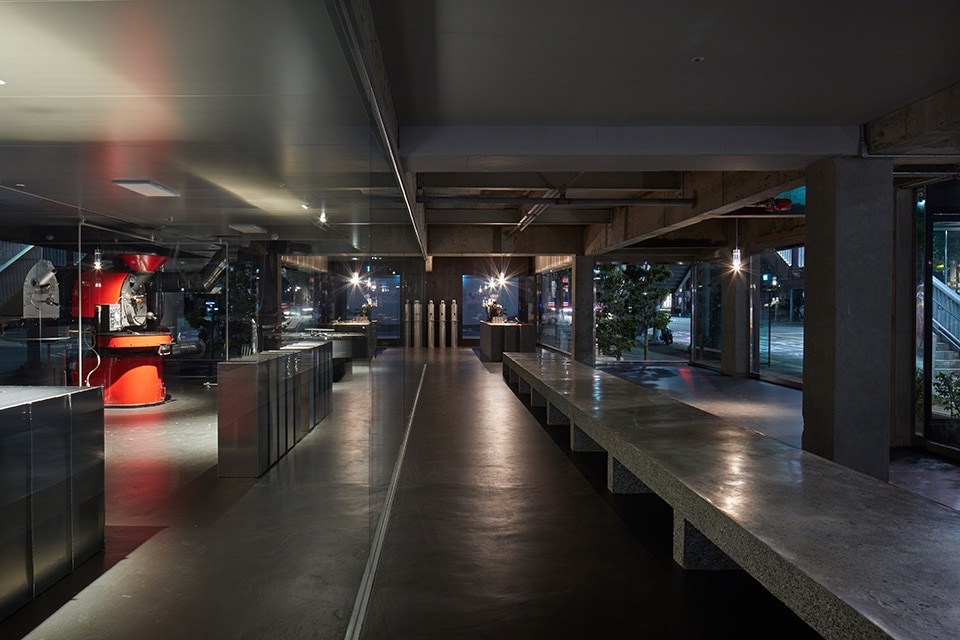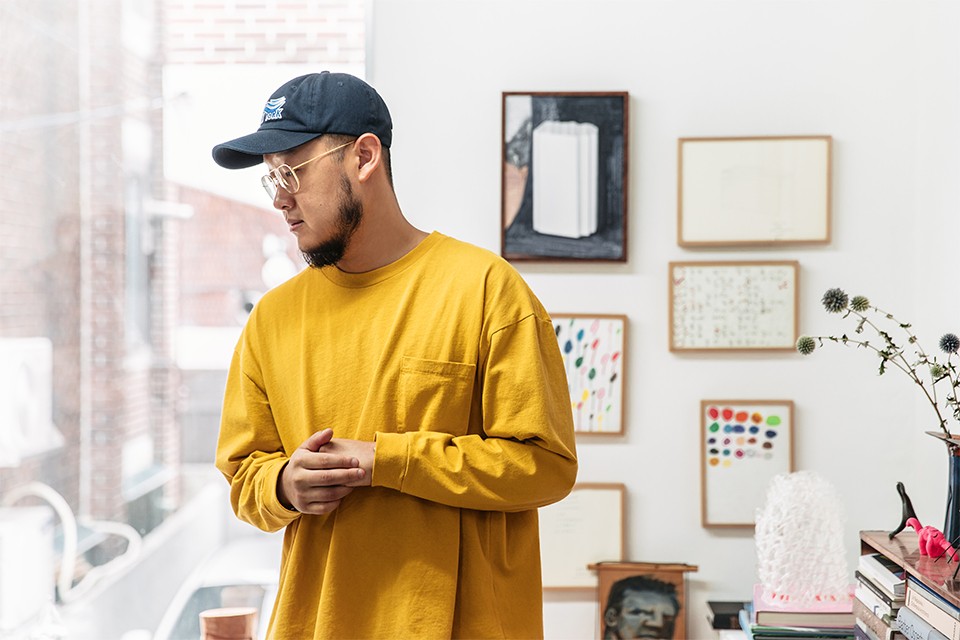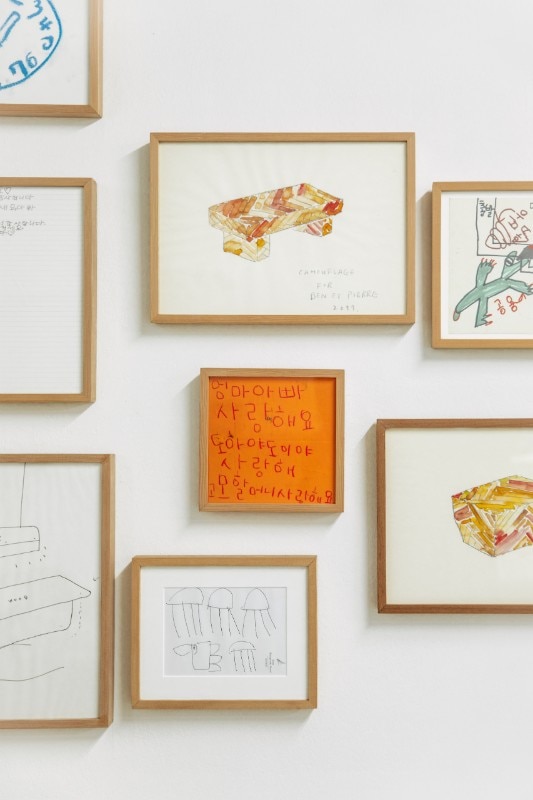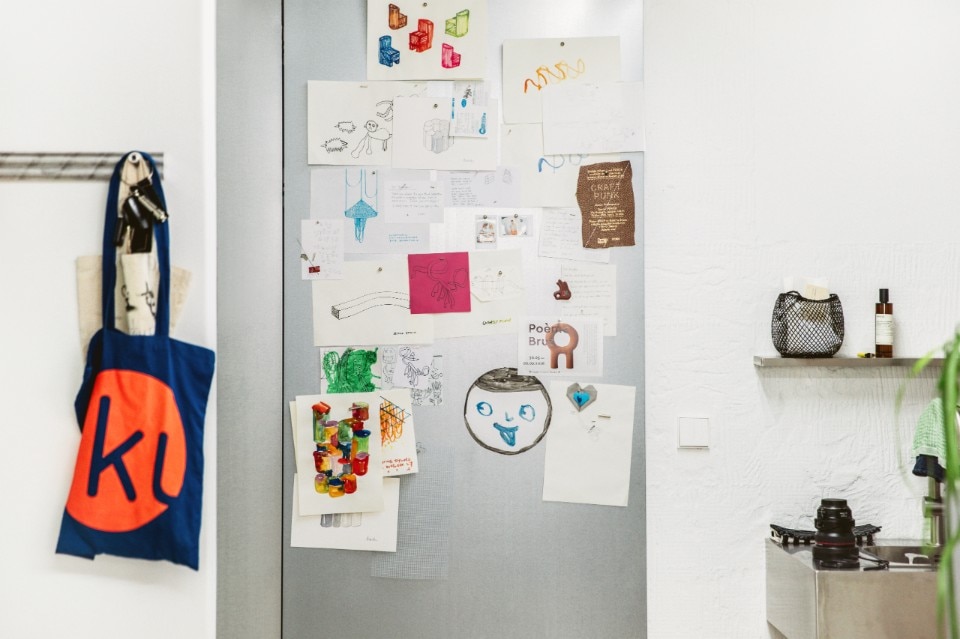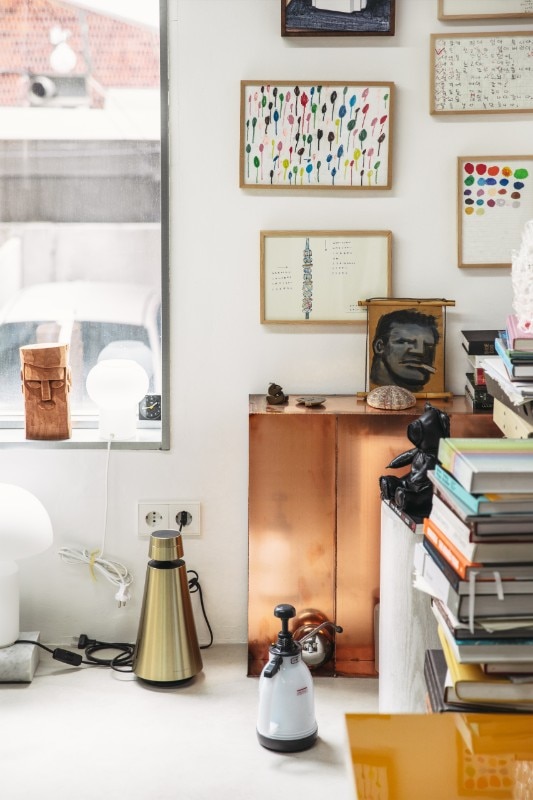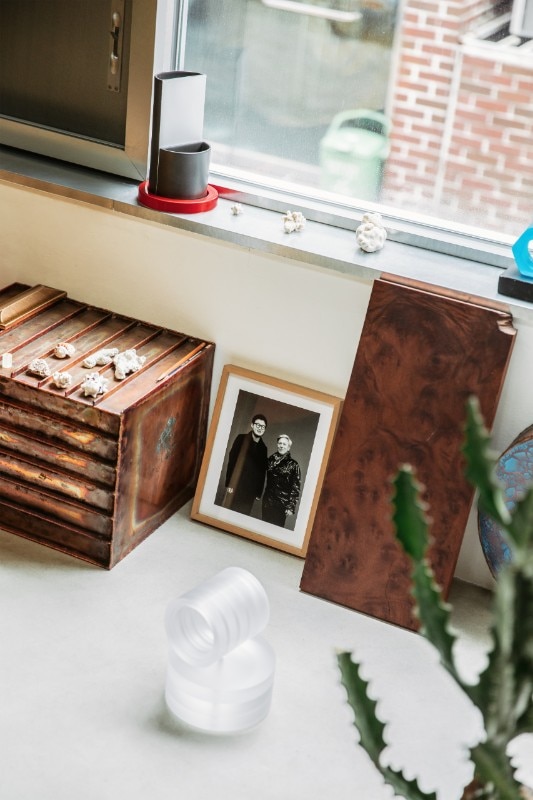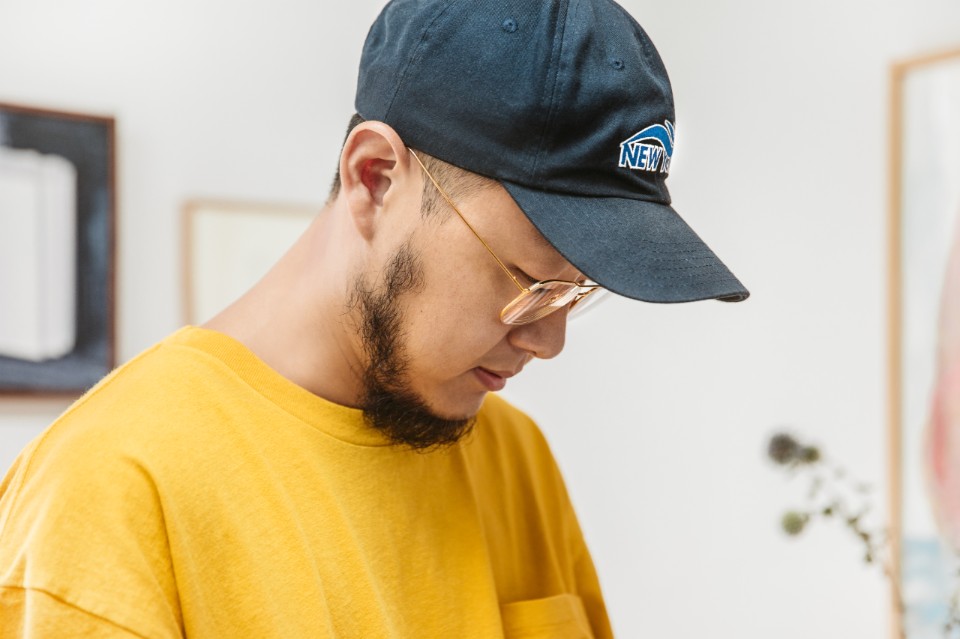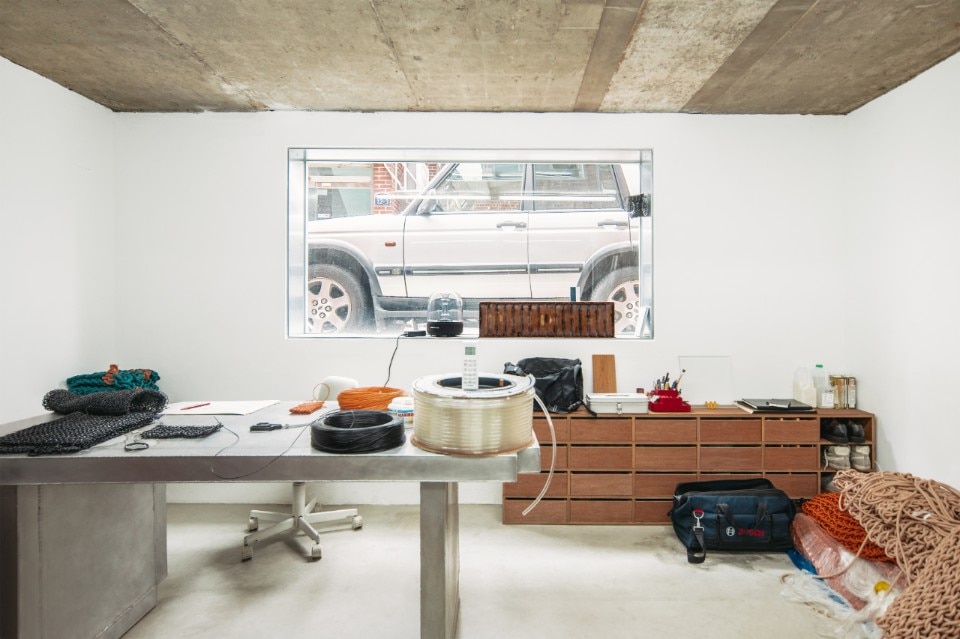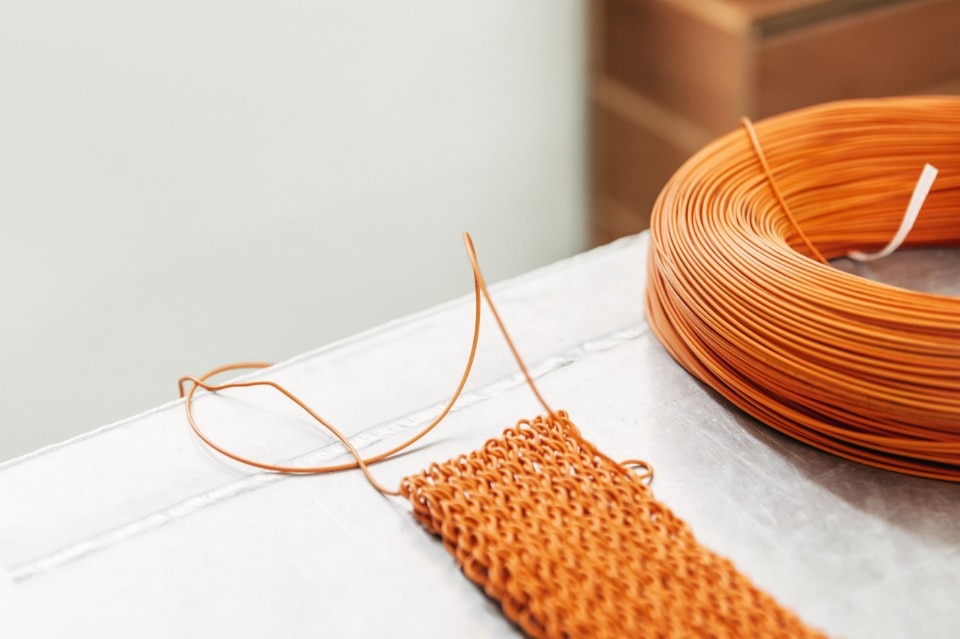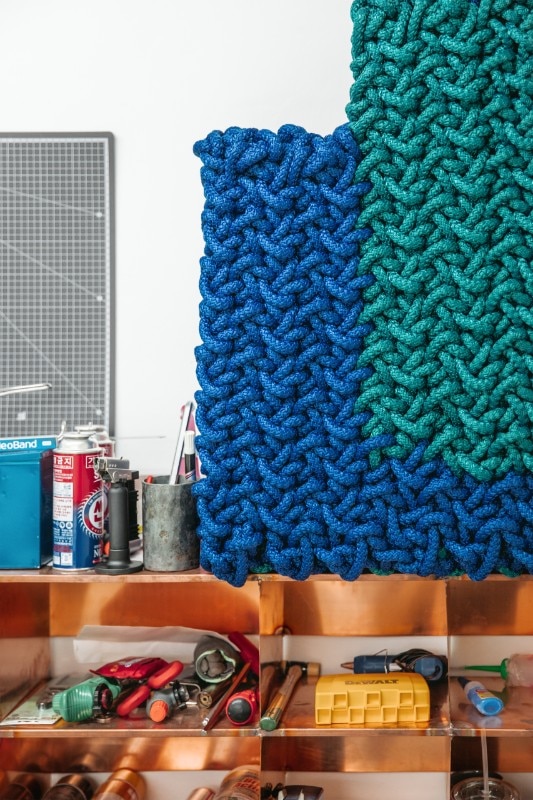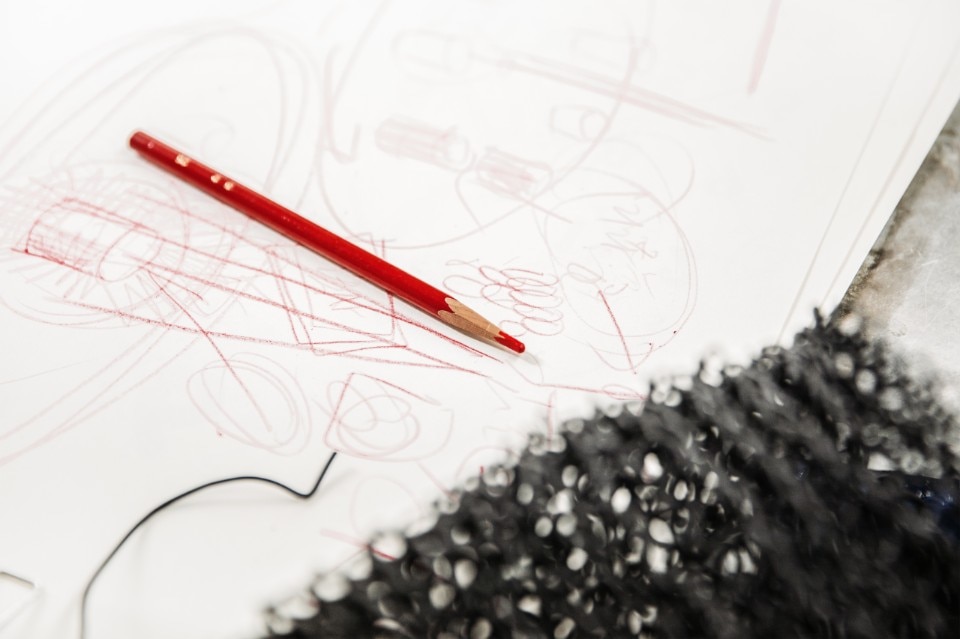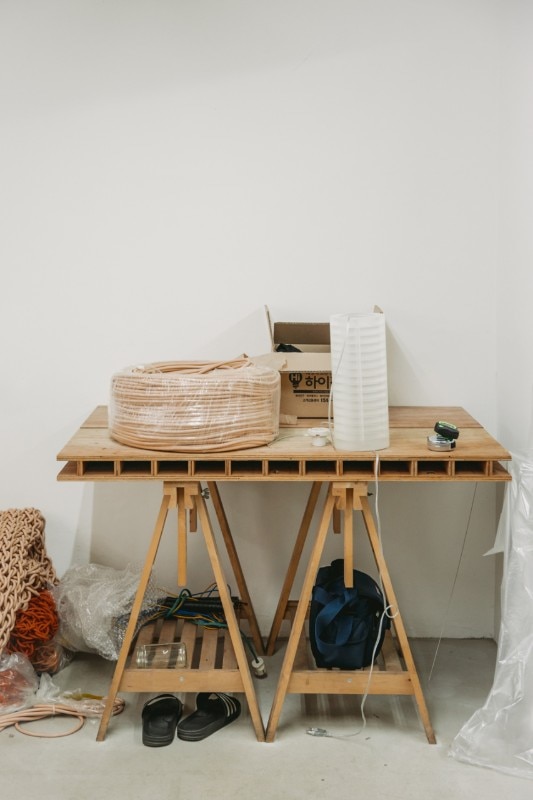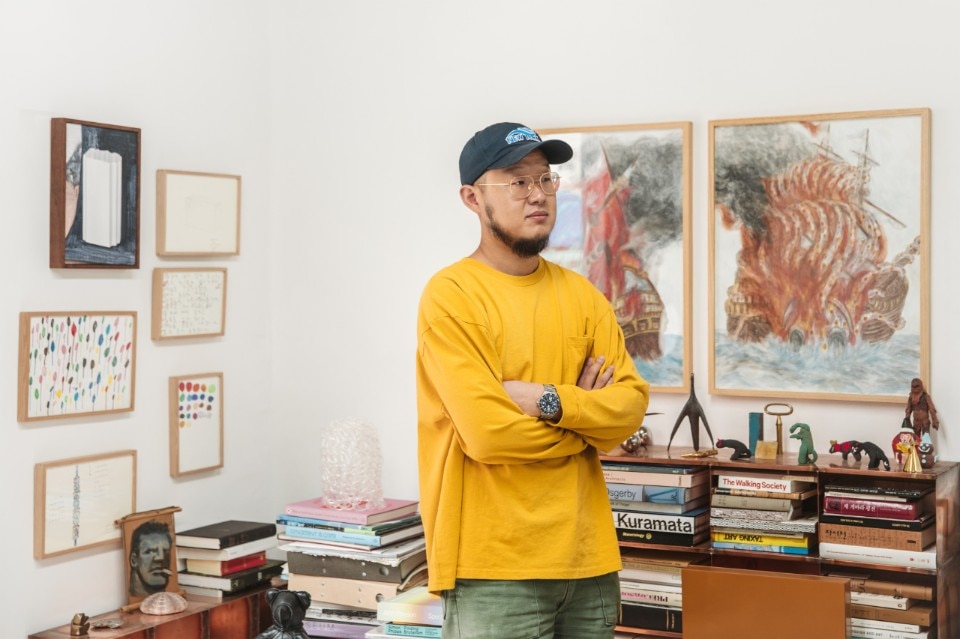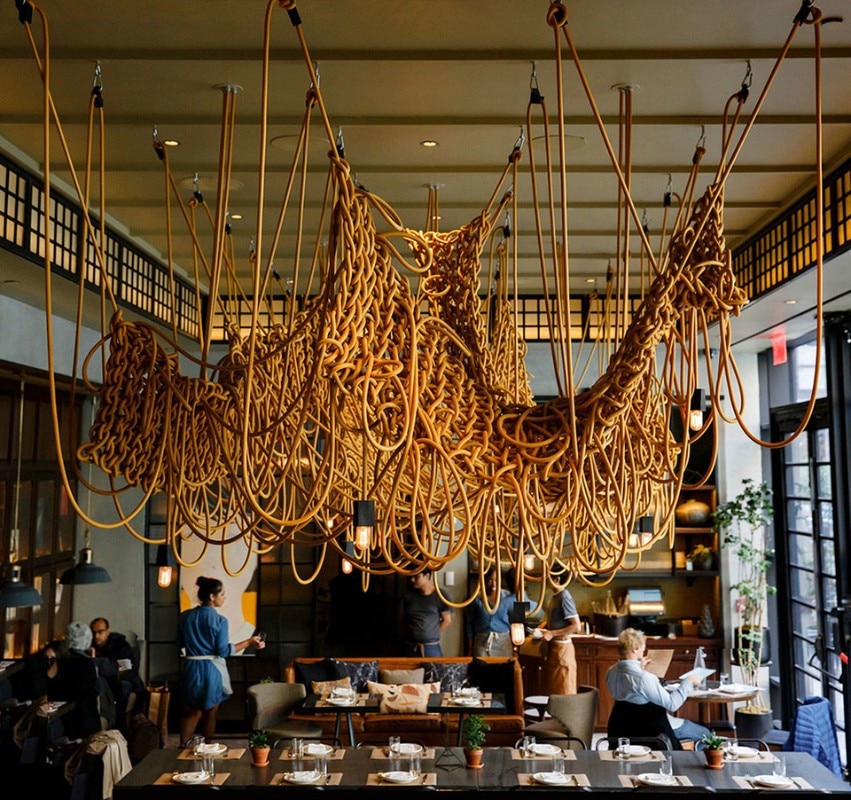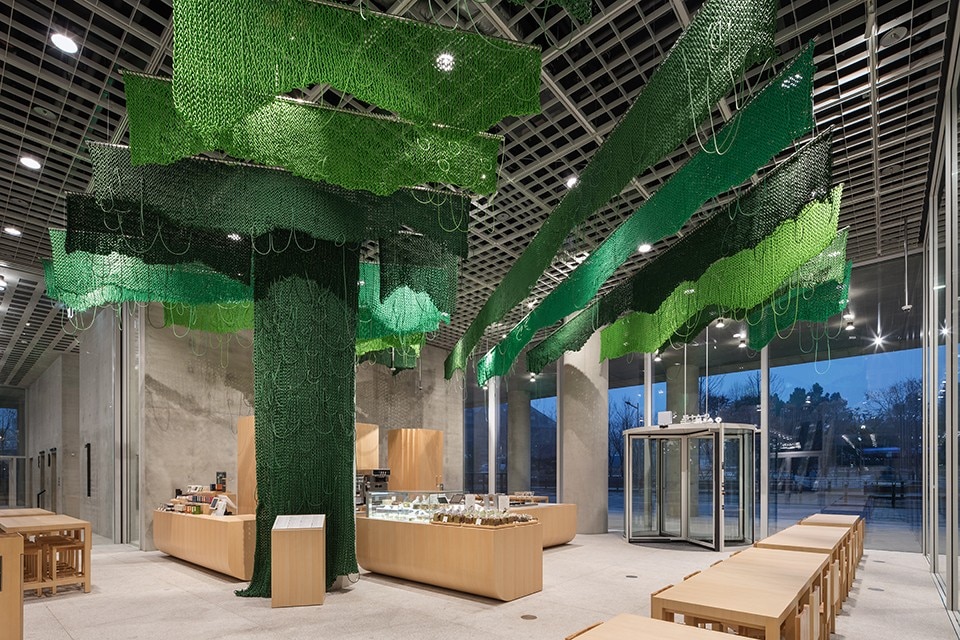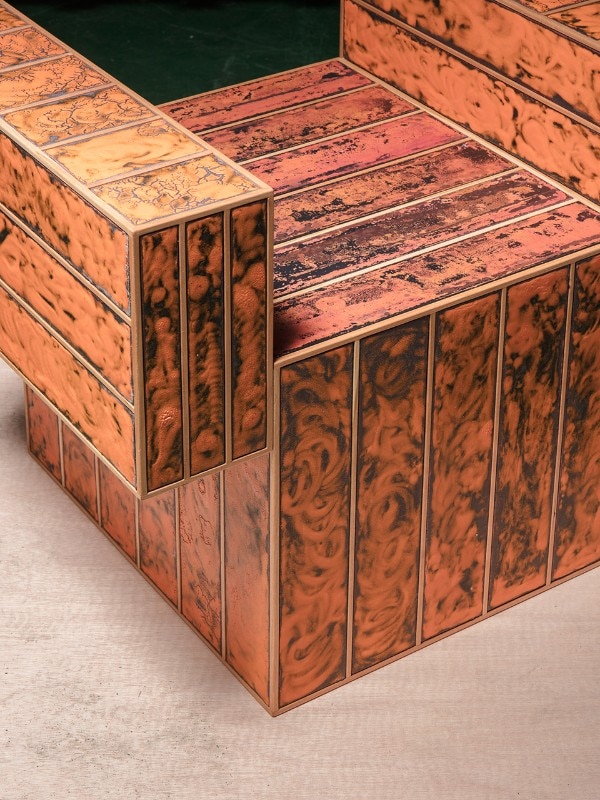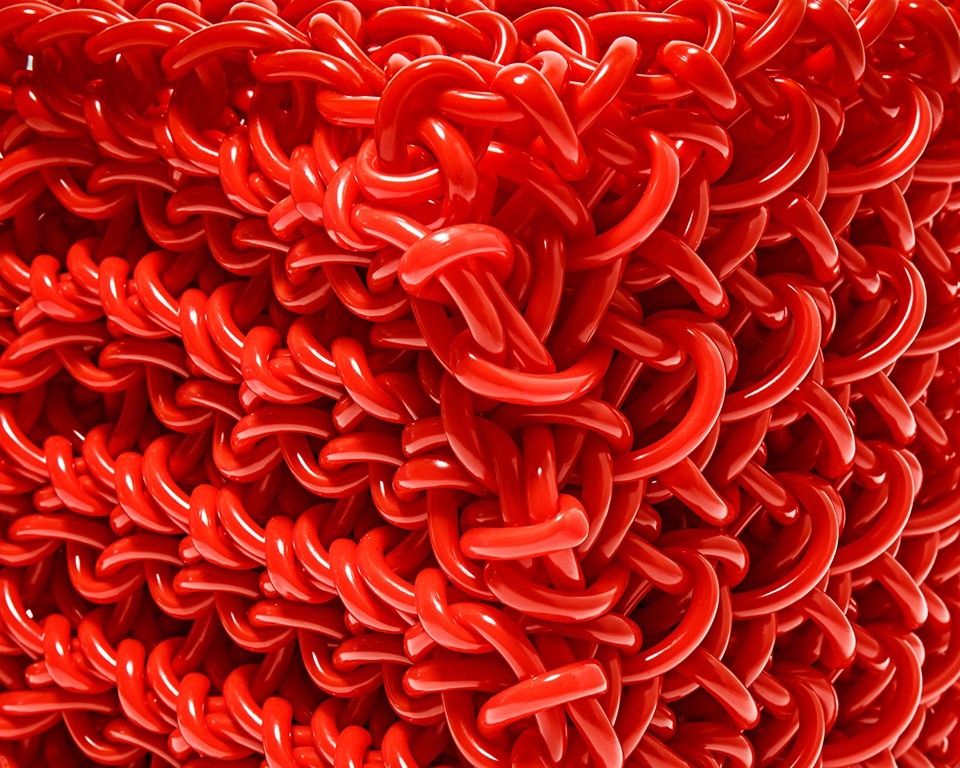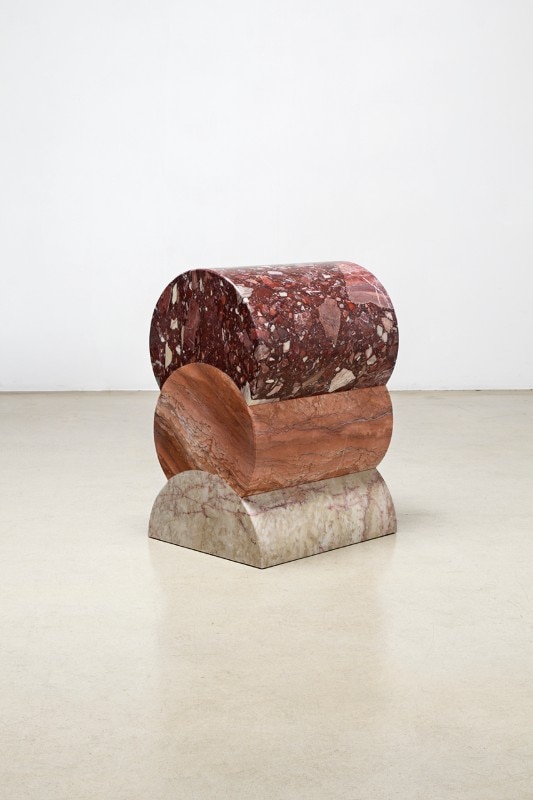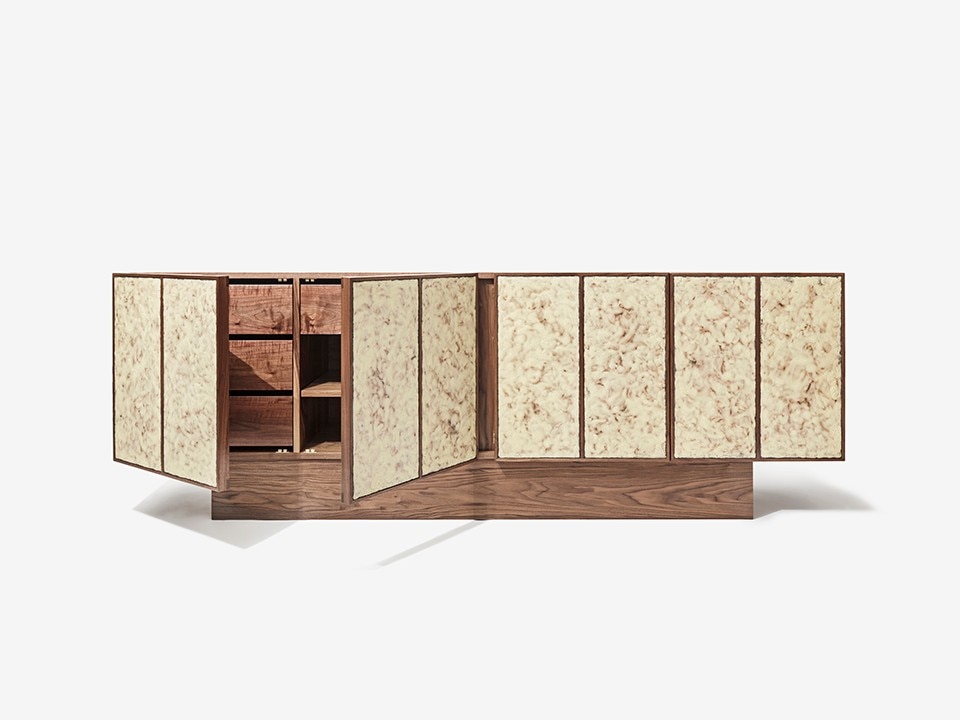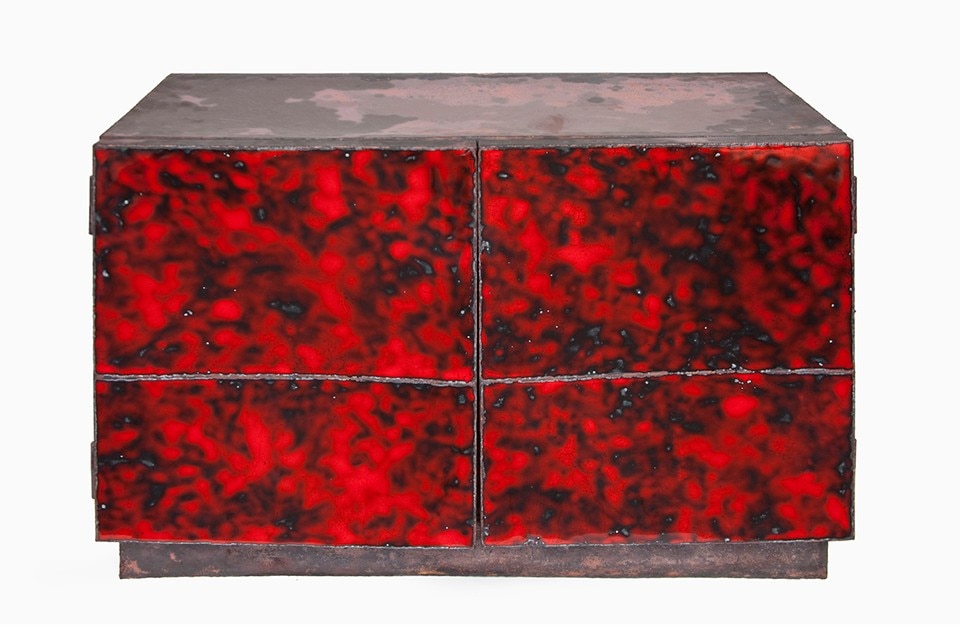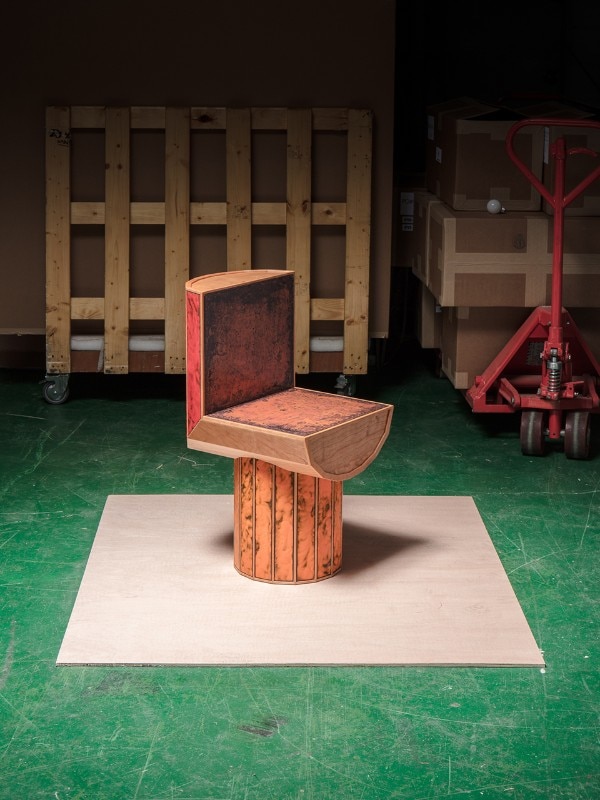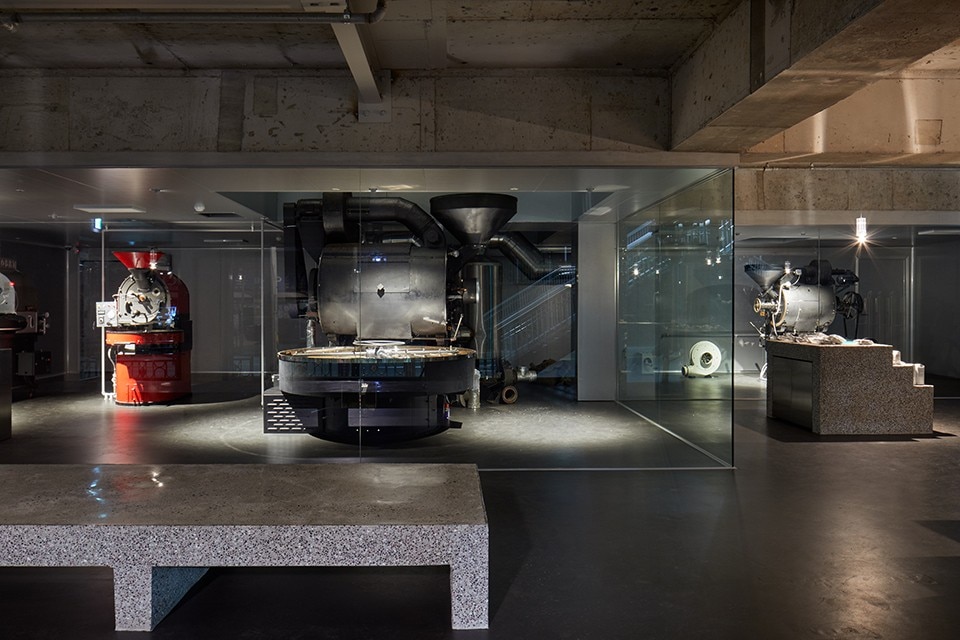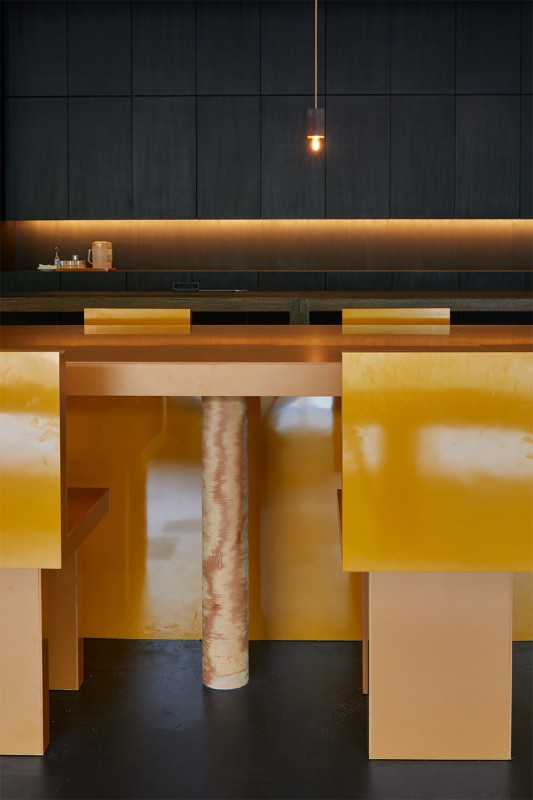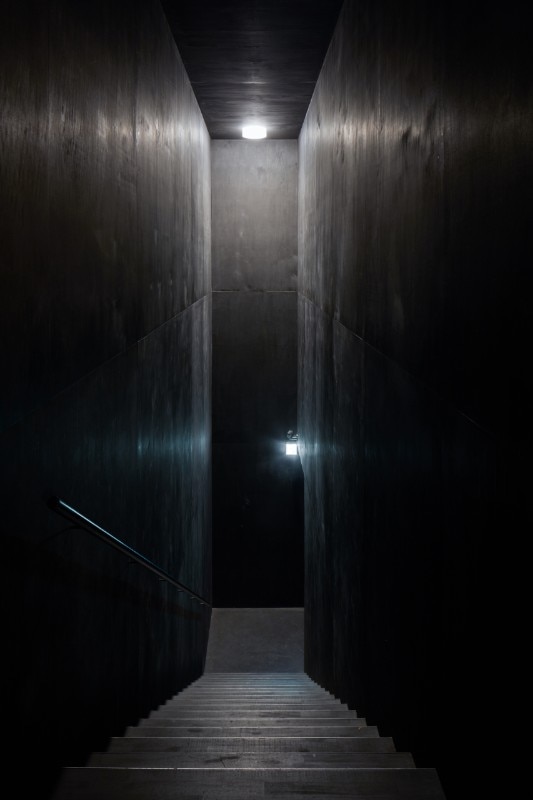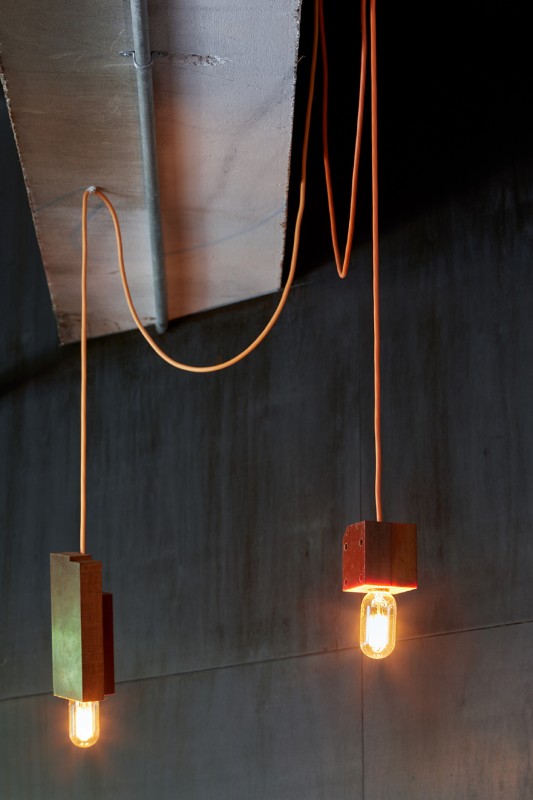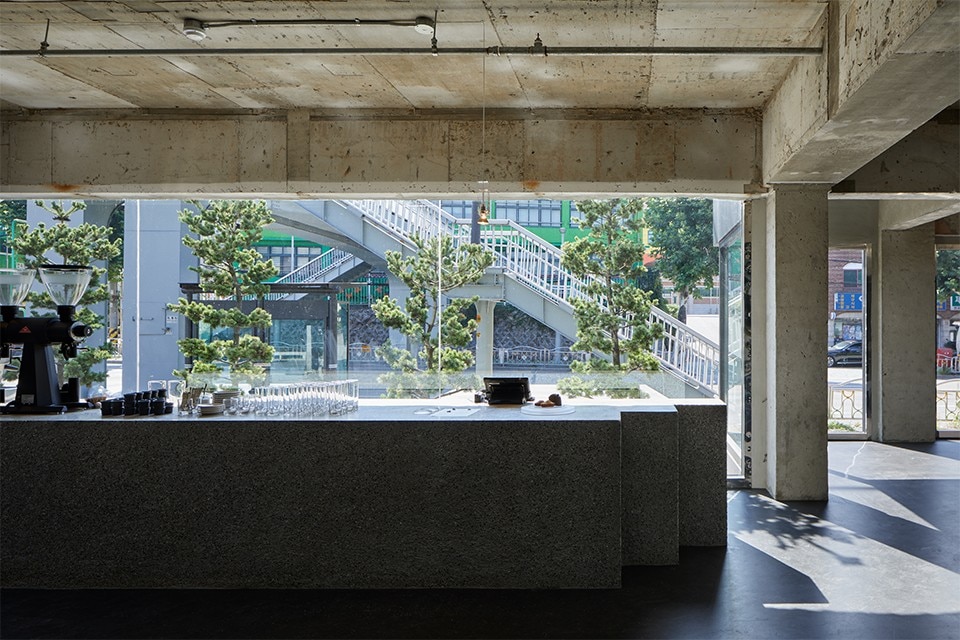Lee Kwangho emerged onto the local and global design scene in 2007 through his works of lighting and chairs created by interweaving electrical wires - known, respectively, as the “Knot” and “Obsession” series. Not long after being introduced in influential architecture and design magazines such as Dezeen and Designboom, Lee held his first solo exhibition, not in his hometown of Seoul, Korea, but in Montreal, Canada, at the Les Commissaires. Afterwards, he collaborated with the Johnson Trading Gallery in New York and the Victor Hunt Gallery in Brussels, participating in Design Miami/ Basel, the premier showcase for collectible design. For Lee, who explores and pushes boundaries between the practical and artistic, industrial production and handicraft, experimentation with material is at the centre of his practice. We met with Lee to discover how he reinterprets and gives new meaning to everyday materials.
You create works that are more like pieces of art than mere furniture that has been mass-produced or handcrafted. How would you define yourself?
I just create what I want. I am known by many titles: creator, designer, artist, and creative director, to name a few. I do not really have preference for one over the others. I am fine with people addressing me by whatever seems most relevant. What I, myself, am most interested in are the ways in which my works are able to form relationships within specific spaces.
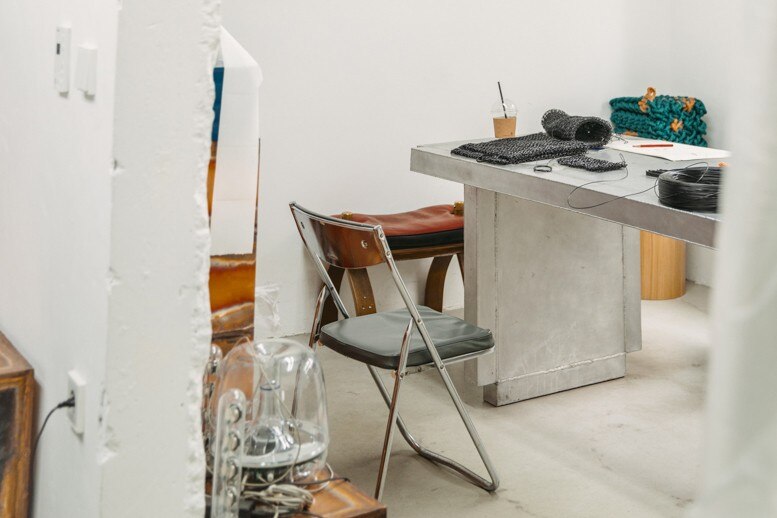
“Knot-Beyond the Inevitable” series of ’07, inspired by memories of your grandmother’s knitting, catapulted you to global spotlight. Could you tell us how the project came about?
In Korea, in the ‘80s, crocheted objects, of mothers or grandmothers, were quite common to find in households, placed usually on top of the TV or dining table. The project was a natural development from my memories as a child, as I also recall such objects. I had been pondering ways to create objects by hand from start to finish when knitting came to mind. I came up with the thought of designing lighting with minimal elements, such as the bulb and cords, and eventually narrowed down the idea to knitting with electrical cords.
Even when creating the same object, the approach of a designer and that of a craftsman is different.
Designers and craftsmen are similar in that they both continue to hone their skills to create better objects. However, while a craftsman devotes himself or herself to the completeness of the object, I, as a designer, try to imagine from the beginning, the ideal space for the work. I try to have a bigger picture for the work, conceptualizing in detail the context in which it will eventually be placed.
Works of the “Knot” series differ in form according to the way the electrical wires have been woven. It seems that when you started out, you were more concerned with the perfection of each lighting, but as the project progressed, you increasingly began to focus on spatial relation, that is, connectivity.
I varied the weaving pattern, form, and colour of the lighting considering the size and purpose, as well as the existing furniture of the space. Before, I created the pieces without knowing where they would eventually be installed, and I, therefore, maintained the standard form of lighting without any bold experimentation. Now, I usually begin designing once the venue for the piece has been confirmed, so I have been able to play around with form, for example, making lighting that are wide, elongated, or even covering the ceiling. As a result, the lighting works have undergone change in form in accordance with space.
The woven light fittings were followed by a series of woven chairs. Despite featuring the same materials and the same technique, the two series are different. The chairs seem somewhat compulsive as the wires are densely woven, whereas the lights are more flexible as the wires are spread across the installed space.
Light fittings tend to have more flexibility and freedom because they are hung from the ceiling. On the other hand, chairs must function as a seat and therefore have stable form. My light fittings are made with electric wires, but furniture pieces have been made mainly with PVC or nylon tubes in the most fundamental form. This is to enable the furniture to perform its original function. Taking for example, the chair, creating a basic form requires consistent and mechanical efforts. In fact, over the course of discovering the most compatible form for my chairs, I had to work in an obsessive, repetitive manner. From this, I initially came up with the name “Obsession Chair.” However, nowadays, I prefer rather frank, direct designations, so I refer to the works as either “Knitted Stool” or “Knitted Chair.”
Apart from wires and cables, metal is the material that you use most consistently. Could you tell us more about your work created using the traditional Korean enamelling technique called chilbo, involving applying glaze with crushed coloured glass on metal surfaces and baking the metal pieces in a kiln?
As a metal craft major, I am comfortable working with metals. I wanted to take the chilbo technique, which is usually for small sized-objects such as accessories or tableware, and try it out on a much larger surface to make furniture. Though now there is not much visible difference between the works, I spent nearly ten years studying and experimenting with the technique. The collection that I had recently presented at Design Miami/ Basel features metal sheets decorated with the chilbo technique that have been inlaid into wood frames and joined together like tiles. My previous works were largely focused on the exploration of materials but these days I have also come to consider the practicality of the piece and therefore involve the use of materials such as wood.
You seem interested in traditional craft techniques, such as chilbo (enamelling) and ottchil (lacquering). Do you carry out the craft work yourself.
In the case of ottchil, the naturally-obtained lacquer may trigger a strong allergic reaction, so I have it done by a professional who can properly handle the material. But I do carry out the chilbo technique myself, and practicing this technique has allowed me to reflect upon traditional materials. If you do not confine “traditional materials” to the notion of the “traditional,” then they become easier to approach. The notion of “traditional” creates a lot of restrictions on the process of working the material. I mean, the traditional process has a very specific usage, approach, and even outcome. The series of enamelled copper sideboards that I had first presented was basically the result of my study on surfaces. Even when working with traditional materials, I try not to be bound by tradition and work with them in my own way. For the enamelling technique, I use kilns for ceramics, rather than the usual kilns for chilbo crafts. The larger ceramic kilns start out low but are able to hit very high temperatures, so complex and diverse changes occur inside the kilns. Different textures are created depending on these changes. As for the lacquering, I aim for a handworked texture with natural spots as opposed to a plastic-like, smooth finish. The majority of my projects are initiated by personal curiosity rather upon the request of a client, and it takes time for people to get used to works like this. I have been creating pieces using the chilbo technique since 2009, but it seems only recently that people are really beginning to show interest in them.
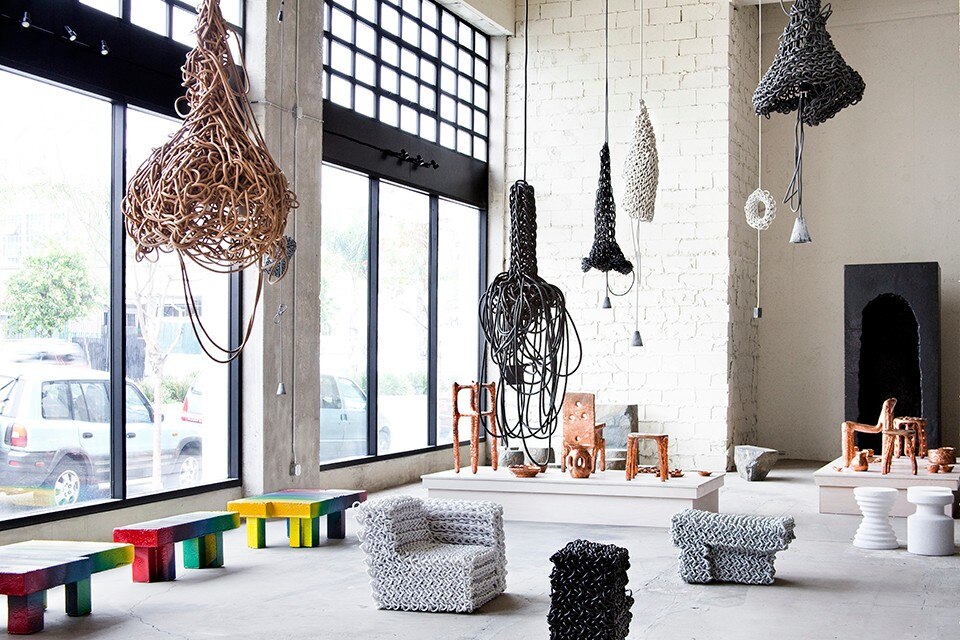
How was your work received at Design Miami/ Basel this past June?
Personally, I do not think there is anything significant about contemporary reinterpretation of traditional Korean techniques by a Korean. What is most important is the fact that I live and work in Korea. Forcefully embedding Korean elements on a work may make it seem more awkward. Every person has his or her unique preferences, so I try not to be too concerned about what people think. But of course, it feels great when the work is well-received.
How do you choose colours for your work?
I have colour vision deficiency, so I am not confident with colours. I like primary colours that I can perceive well. I just utilize the inherent colours of the material rather than choosing my own colours.
You use a wide range of materials from rubber hoses and Styrofoam to enamel and wood. Could you explain the process of discovering materials for your work?
Sketches and 3D modelling are often not quite enough to complete the design process, so I spend a lot of time at these big marketplaces in Seoul, for example in the districts of Eulji-ro and Cheonggyecheon, where they sell all kinds of materials. There, I just go around staring blankly at materials that are familiar to me, and, at some point, I have ideas popping into my mind. This sort of approach presents me with new challenges and direction for my work. One of my recent projects has been designing furniture for Anthracite, a coffee shop that opened this past July in Yeonhui-dong, Seoul. Many people seem to think that the furniture is made of acrylic, but it is actually made of Bakelite, a type of pulp-based plastic. Bakelite was commonly used in the past, but now it is mainly used as an interior material for electric insulators for its non-conductive property. It is originally yellow in colour, but it gradually becomes a hue of reddish brown with long-term sunlight exposure. I found this to be a charming characteristic, and therefore decided to use it. Also, the furniture at Anthracite will eventually change colour with time.
You certainly have a high regard for material, but it seems like what is more important is your approach towards the material. The coincidental effects created through the encounter between material and technique, for example, the heat tints formed when welding lacquered bronze and the contrast between metal and enamel, are a crucial element in your work.
There are properties inherent to a material and those that naturally emerge through interaction during the working process. The latter, including heat tints occurring during the welding process and the color contrasts formed during the firing process of the chilbo technique, cannot be perfectly controlled. As for the “Knot” series, the lighting may unfold in an unexpected way depending on how the wires are used and the center of mass. Though these are aspects that I am unable to plan out perfectly, in some sense, not having overall control is precisely the type of control that I have over the projects. Such coincidental effects are always interesting beyond expectations and definitely a huge motivation for my work.
Tell us about your space project group, NOL.
NOL is a collective that I have formed together with spatial designers Namgung Kyo and Oh Hyunjin. The name is a combination of the first letter of our last names, but I also see it as an abbreviation for “no one lives.” I believe that we can experiment different approaches with greater possibilities if we think that “no one lives” in the particular space. There are restrictions as to the material and composition once we have a fixed idea that someone lives in the space. Our first collaborative project was in 2016, the renovation of the building of my studio in Seongsu-dong. We chose iron as the main material. While maintaining the basic structure of the building, we replaced all movable objects such as windows and doors with iron, to create an effect as if iron is moving. After this project, we worked together on the spatial design of the communal space of the new headquarters for Amorepacific and the Anthracite coffee shop in Yeonhui-dong.
NOL has carried out a project in the Amorepacific headquarters designed by David Chipperfield.
I often train myself to imagine the spaces that my work will eventually end up in. I gave a lot of thought to the type, form and colour of the furniture that is to be placed inside David Chipperfield’s architecture. NOL carried out spatial design of two tea rooms of Osulloc Tea House, a tea culture brand under Amorepacific, in the communal space of the headquarters. We designed the space with the color green and object resembling rocks and clouds so that visitors can visualize the green tea plantations on Jeju Island, where the brand’s tea is produced. I, personally, designed the furniture in the lobby, outdoor benches in the courtyard on the 5th and 11th floors, as well as the furniture in the chairman’s office. In Korea, sometimes the furniture inside a building is not as beautiful as the architectural structure itself. However, people are gradually beginning to perceive the importance of furniture, which people sit on, touch, and use.
Tell us about NOL’s recent project at Anthracite, Yeonhui.
Anthracite Coffee Roasters is a Korean coffee house with branches in Seogyo-dong, Hannam-dong, Hapjeong-dong in Seoul, and also on Jeju Island. They recently opened their fifth store in Yeonhui-dong, Seoul. Each store has a different concept, and the entire space of this particular store was finished in black, creating a dark spatial effect. Instead of the humdrum sort of interior with a lot of sun, we created a space where visitors can experience the process of entering a dark interior, passing through a dark corridor and stairs, and therefore the process of adjusting their eyes to darkness. We imagined a space where people sit freely across a single piece of furniture spread across the space. From this space, people, while enjoying a cup of coffee, are able to observe the daily scenes of the elementary school across the building, people and cars passing by, rain coming and going, and the sun rising and setting, as if watching on a screen. We wanted people to be able to enjoy such experience to the fullest.
Designers born from the ‘80s onward, unlike those of the previous generations, are active users of social media including Instagram.
I, too, look through what other designers across the world are working on at the moment on Instagram. Designers know really well the best way to arrange and photograph their work, and to show them to others. Designers promoting themselves through images has become something very natural, and, in fact, the standards for this have become quite high. Nowadays, we are able to observe others’ work, and a photograph is enough to imagine even the quality of the work. We are able to judge from the images posted on social media whether the work is merely an imitation, or one with a clear concept.
